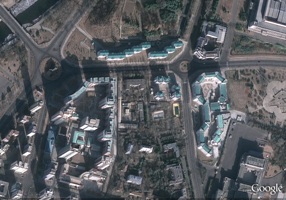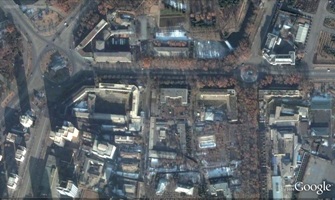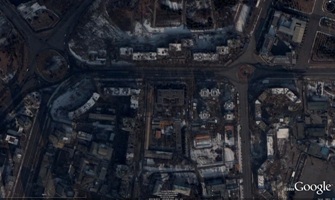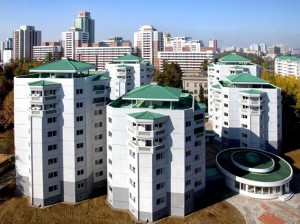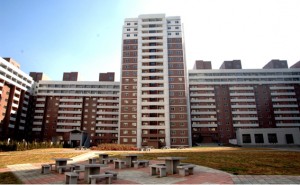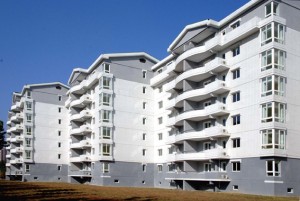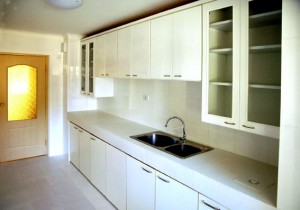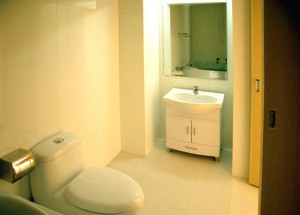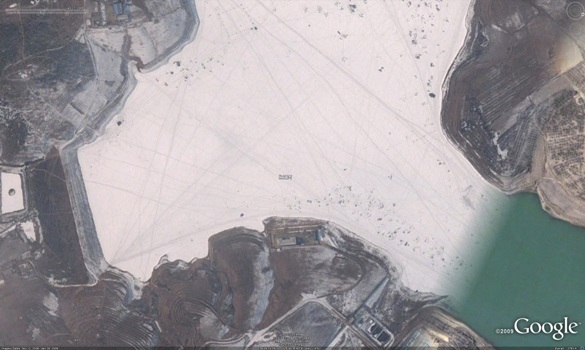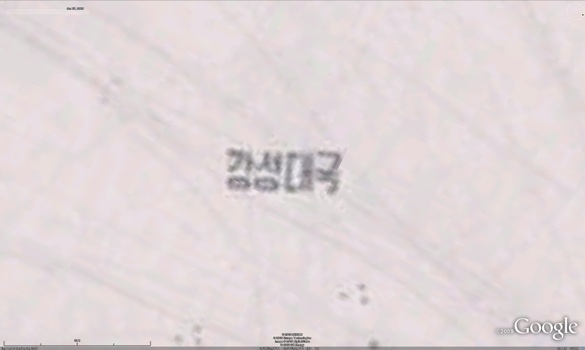UPDATE 4: Here is the DPRK Pavilion’s web page (h/t NKNews.org).
UPDATE 3: A video of the DPRK pavilion at the Shanghai expo can be seen here.
UPDATE 2: Voice of America offers a description of the interior of theD PRK’s Pavilion:
Inside, there is a replica of Pyongyang’s Juche Statue, a small waterway that represents the North’s Taedong River, a traditional bridge and large fountain with colored lights.
On top of the fountain, a group of white marble statues of naked boys encircle two others. One boy holds the other up in the air as he lifts a dove into the sky.
In one corner, there is a small cave that contains a reproduction of a mural from the North’s Koguryo Tombs, a World Heritage site.
Along a wall, beneath the phrase “Paradise for the People,” a row of television sets plays videos depicting everyday life in North Korea.
Some of the videos show North Koreans leisurely bowling, playing golf and ice skating. Although some of the footage appears to be recent, other shots seem to be decades old.
Many who visited the pavilion Tuesday say that aside from the fact that there were no lines to get in, they wanted to visit because, as they put it, North Korea is so mysterious.
UPDATE 1: The Shanghai Expo has posted some information on the DPRK’s Pavilion. Here are some of the details:
Theme: Urban Development of Pyongyang, the Capital of DPR Korea (Prosperous Pyongyang based on the River Taedong Culture)
Pavilion Features: The pavilion perfectly merges national characteristics of DPRK together with its modern beauty. Outer walls are decorated with national flags and a winged steed bronze statue. Main items exhibited in the pavilion include Juche Tower, Taedong River, Korean-style pavilions, rockeries and small stone caves. All of them present a prosperous and modern Pyongyang based on the traditions of DPRK, where education, science, culture and sports have achieved great development during its long history.
Pavilion Highlights
Highlight 1: The Juche Tower Model — 4.5-meter-high model of Juche Tower is exhibited in the pavilion.
Highlight 2: Symbol of Taedong River — winding river flows across the pavilion, reminding people of the stretching Taedong River.
Highlight 3: National Section and Stone Caves — national section and stone caves are exhibited on the right side of the pavilion. Inside the cave the world heritage of tomb murals in Jiangxi County and paintings of DPRK style are displayed.
Here are some photos of the DPRK’s pavilion (h/t Daylife):
And here are some photos from the Shanghai Scrap blog:
ORIGINAL POST: According to the PRC’s People’s Daily:
China welcomes countries including the Democratic People’s Republic of Korea (DPRK) to participate in the 2010 Shanghai World Expo, a Foreign Ministry spokesman said Tuesday.
…
DPRK Chamber of Commerce Vice-Chairman Ri Song Un told Xinhua on March 18 that the country had already finished preparatory work for the 2010 Shanghai World Expo, its first Expo appearance.
Situated in an area of 5.28 square kilometers at the core the city of Shanghai to exhibitions, events and forums, the six-month expo starting from May 1 will attract about 200 nations and regions and international organizations’ participation, as well as 70 million visitors from home and abroad.
Read the full story here:
China welcomes DPRK in attending Shanghai World Expo: FM spokesman
People’s Daily
3/30/2010
















